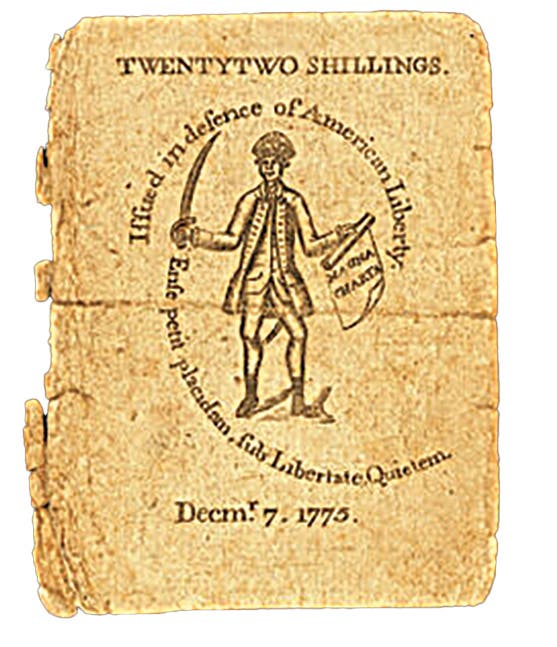All Aboard to Pennsylvania
Some people feel the need to climb high mountains, to ski down dangerous slopes where avalanches lurch, or to descend to the RMS Titanic in a tiny submersible to get…
Some people feel the need to climb high mountains, to ski down dangerous slopes where avalanches lurch, or to descend to the RMS Titanic in a tiny submersible to get their kicks. I am much more sedate about these things, and lately I have become interested in taking rides on historic short line railroads. It just so happens that the Mid-Atlantic states have quite a few of these antique steam locomotive-pulled trains that one can ride through scenic vistas at reasonable prices. So, I recently had the chance to do my first one of these trips, and it took me to scenic Strasburg Penn., deep in Amish country in Lancaster County. Strasburg turned out to be quite a historic town and of course it did have a note issuing National Bank, so this month let’s visit.
Strasburg is a village located in Lancaster County Pennsylvania about 8 miles southeast of Lancaster city via state route 896, 6 miles due east of gap via state route 741. The current population is around 3,200 people. It is really a quaint village filled with historic buildings, but its main attraction is the historic Strasburg railroad which we will discuss later in this article.
Strasburg Borough’s origins can be traced to the Old Conestoga Road, now Main Street, which passed through the area which was to be developed as the town of Strasburg. It was 1693 when French hunter and fur trader, Pierre that, settled in one of the most scenic spots in Lancaster County establishing trade with the local Delaware Indians. That is right, French. More French people – Huguenots from France’s Alsace region – soon followed. Curious, isn’t it, that a town and countryside that has been alive with a bustling Amish culture for centuries traces its roots back to France? The name of the town never actually came to be until the mid-1700s when, again, the French named it in honor of Strasbourg, the cathedral city of their Alsace homeland.
The Old Conestoga Road was already in use by 1714. Between 1730 and 1750 a tavern and a few log houses were built alongside this road in the vicinity of what is Strasburg Borough today. At one time, the village of Strasburg was known as Bettlehausen (beggar houses). As trade and transportation prospered, Strasburg grew. As Conestoga wagons were used to carry goods from Philadelphia into the interior, Strasburg became a way station with as many as ten hotels and as many stores for the travelers. By 1759, there were thirty-two taxable properties in the town. Most of the early settlers of Strasburg Borough were Mennonites of Swiss or German lineage. Several church congregations were formed around the 1760s. The first church building was built later in 1807 by the Methodists. The Mennonites, the Lutherans, the Episcopalians, and the Presbyterians all had churches soon thereafter. The small hamlet was known as Strasburg by the beginning of the Revolutionary War and is one of the few places in Lancaster County which was named for a place in Germany. Because Strasburg was located along the Old Conestoga Road, rapid growth occurred within the hamlet during the late 18th Century, and it subsequently became a commercial center for the residents of the surrounding farmlands, as well as passers-by. By the late 1800s, Strasburg had become the most populous town in Lancaster County.
Strasburg was a center for locally oriented, small-scale industries such as blacksmithing, weaving, clock-making, and cabinetmaking. A post office was established in Strasburg in 1804, and the town was officially incorporated as a borough in 1816. Along with its local commercial and industrial importance, Strasburg played a significant role in establishing local education opportunities. Records show that, as early as 1790, there was a small, private school available. About 1808, the first school building was built which was later incorporated into the State school program. Strasburg was one of the first communities to favor free education and, in 1831, sent a petition supporting free general education to the State Legislature. This petition directly contributed to the passage of the Act of 1831, appropriating monies for the establishment of a public school system.
The source of Strasburg’s prosperity was the road that ran through it, or more accurately, it was the people, wagons, freight, and animals that daily traveled upon that road who fueled Strasburg’s economy. Lining the Main Street were taverns, blacksmith shops, wheelwrights, carriage and wagon makers, coopers, saddle and harness makers, stables for horses, and pens in which drovers could secure their animals overnight. While most of these businesses also provided services to the local population, it was the traffic passing through town that kept them going in large numbers. With the completion of the Philadelphia to Lancaster Turnpike (present-day Route 30) in 1794, traffic through Strasburg began to decline. Not precipitously at first, but increasingly more drivers opted for the paved surface of the turnpike, even if it came at the price of paying a toll. From the second-largest town in the county in 1798, Strasburg dropped to fifth largest by 1815.
If the Turnpike was the first blow to the town’s economic prosperity, construction of the Philadelphia and Columbia railroad was the second. The Strasburg Railroad, chartered in 1832, was an attempt to minimize the negative impact that the Philadelphia and Columbia RR might have had on Strasburg. And it seems to have worked because Strasburg experienced another renaissance of sorts in the decades just prior to and following the Civil War. Large three-story brick buildings were constructed along Main Street, as were buildings in the Italianate and Second Empire styles.
The Strasburg Rail Road is a heritage railroad and the oldest continuously operating standard-gauge railroad in the western hemisphere, as well as the oldest public utility in the Commonwealth of Pennsylvania. Chartered in 1832, the Strasburg Rail Road Company is today a heritage railroad offering excursion trains hauled by steam locomotives on 4.02 mi of track in Pennsylvania Dutch Country, as well as providing contract railroad mechanical services, and freight service to area shippers. Strasburg Rail Road is a short line railroad that connects the town of Strasburg with Amtrak’s Keystone Corridor mainline. Today, the line is used for excursion trains that carry passengers on a 45-minute round-trip journey from East Strasburg to Paradise through nearly 2,500 acres in southeastern Lancaster County. The railroad includes the United States’ only operational wooden dining car on which visitors may dine while riding.
As such an old town, it is not surprising that Strasburg opened a national bank very early in the process. As such, the First National Bank of Strasburg was one of the first 100 banks to join the National Currency scheme and obtained charter #42 in July of 1863. It survived well after the end of the National Currency era – a total of 72 years of note-issuing history. Despite its longevity, it was a rather small bank, and its notes are very desirable today with very few known.
One of the quirks of the initial period of national banking is that many of the first chartered banks were forced to voluntarily liquidate in 1882 before their charters expired, and re-charter under a higher number. This happened to the First National Bank of Strasburg which was forced to liquidate in May of 1882 and reorganized under the same name but with charter #2700. It operated under this charter until 1911, when it was allowed to retake charter #42.
Under charter #42, the First National Bank of Strasburg issued a total of $589,000 in currency (a rather small amount given the longevity of the bank) and under charter #2700 another $350,000. Not a single note is known of charter #2700 – the bank clearly made an effort to remove all the #2700 notes that were circulating in the area, leaving only the handful of Charter #42 notes to satisfy collectors.
There are currently eight large and a dozen small notes reported on charter number 42 in the census. However, I personally have seen an original series serial number one $5 note on this bank many years ago that has not been reported and I am sure there are a few others out there in the hands of the many collectors of Lancaster County notes. In addition, there are quite a few collectors who collect the first 100 charters and naturally the Strasburg bank would be included in that collection putting even more pressure on the few notes that are available.
I was truly fortunate to be able to pick up a delightful series of 1902 plain back $20 note on the First National Bank of Strasburg a few years back at the Baltimore coin show. Large notes from this bank are just plain rare and attractive ones with delightful pens signatures are even rarer. I have included a photo of my note with this article; Please note the wonderful pen signatures of J.H. Wolf, cashier, and Robert S. McClure, president. The bank also issued Series of 1929 small size notes and I have included a photo of one of these also.
Strasburg today is truly the most picturesque of Lancaster County historic towns. There are several dozen buildings in town listed on the National Register of Historic Places, many of which were erected in the 18th century. I have included photos of a home built in 1754 and the old Iron Horse Inn, a hotel built in 1880 that has now been repurposed for office space. But the main attraction in Strasburg is the Strasburg Railroad, which is open every day for rides on various trains. There are first class cars, dining cars, and regular cars. The fares are more than reasonable, and it is a great treat for a family outing. If you find yourself in the Lancaster County area don’t miss Strasburg and give yourself a calming stress-free ride on the Strasburg Railroad.
Readers may address questions or comments about this article or national bank notes in general to Mark Hotz directly by email at markbhotz@gmail.com.








